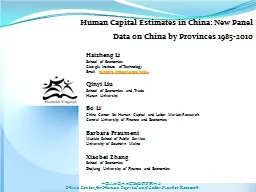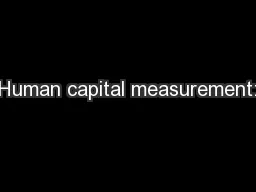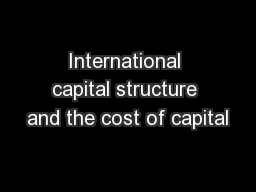PPT-Human Capital Estimates in
Author : celsa-spraggs | Published Date : 2018-01-21
China New Panel Data on China by Provinces 19852010 Haizheng Li School of Economics Georgia Institute of Technology Email haizhengliecongatechedu Qinyi Liu
Presentation Embed Code
Download Presentation
Download Presentation The PPT/PDF document "Human Capital Estimates in" is the property of its rightful owner. Permission is granted to download and print the materials on this website for personal, non-commercial use only, and to display it on your personal computer provided you do not modify the materials and that you retain all copyright notices contained in the materials. By downloading content from our website, you accept the terms of this agreement.
Human Capital Estimates in: Transcript
Download Rules Of Document
"Human Capital Estimates in"The content belongs to its owner. You may download and print it for personal use, without modification, and keep all copyright notices. By downloading, you agree to these terms.
Related Documents














